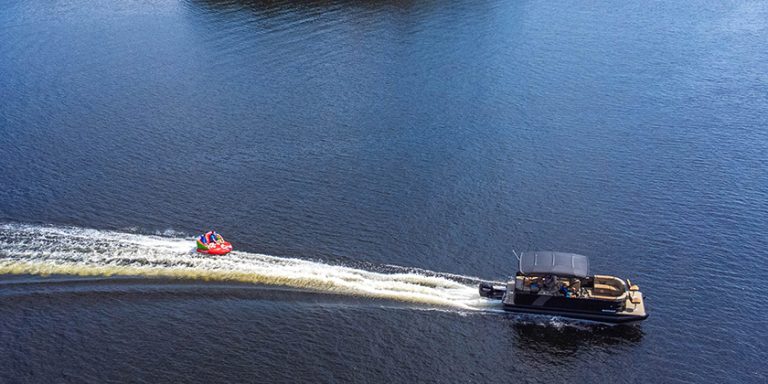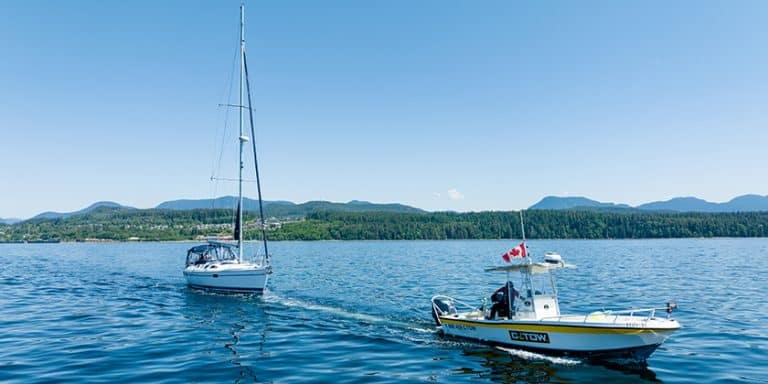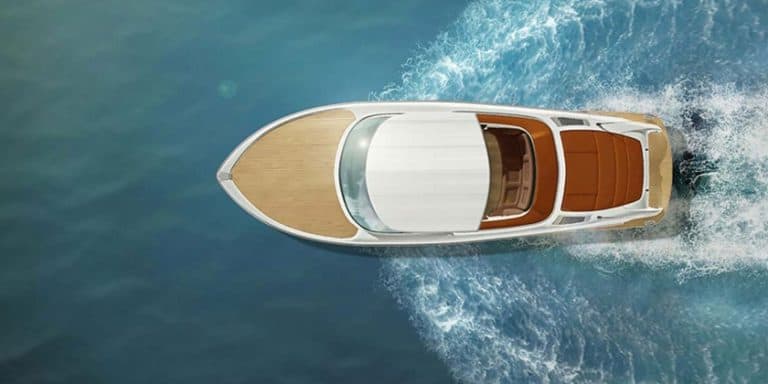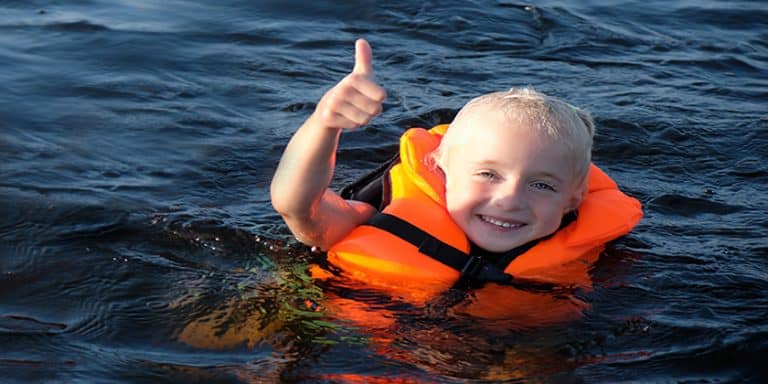Pyrotechnic Distress Flares vs. Electronic Distress Strobes
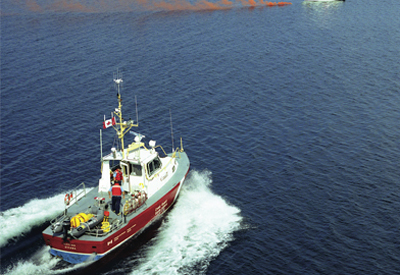
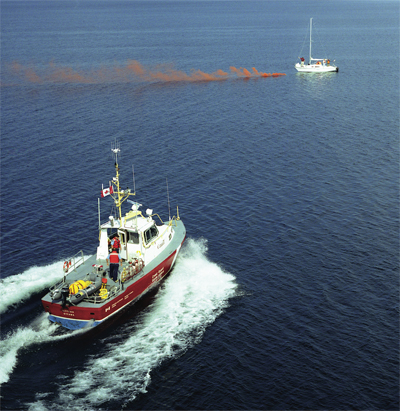 By Andy Adams
By Andy Adams
Which is best? Which is legal? And, when should you signal for help?
Photo: A demonstration of a smoke flare with the Canadian Coast Guard responding. Photo courtesy of CPS-ECP
Pyrotechnic distress flares have been around for decades, while electronic strobe distress flares have only been introduced in the last couple of years – and they aren’t Canadian Coast Guard approved for use in Canada, at least not yet.
But which one is best? And the more important question is: When should you signal for help?
When the authorities do a vessel inspection on the water, they are looking for equipment that is in compliance with the regulations such as lifejackets, bailing buckets, sound signaling devices, and so on. It’s all laid out in the Small Vessel Regulations and larger vessels are to be properly and fully equipped; but for visual signals, vessels under six metres are only required to carry a watertight flashlight, not necessarily flares. Yet aren’t those smaller vesselsthe ones thatare most likely to need help in an emergency?
There are far more small boats, and many are used by less experienced boaters. A simple mistake can turn into an emergency very quickly in a small boat – a man overboard emergency, unexpected swamping,or a sudden capsize in your kayak.
At the 2016 Canadian Safe Boating Council (CASBA) Awards, I was excited to see the Canadian Safe Boating Council recognize the then-new Weems & Plath and Sirius Signal,which won the “Safeguarding the Environment Award.”Why?
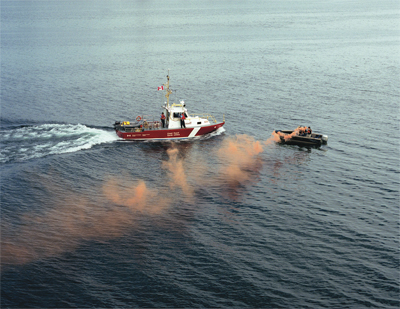 When a boater experiences a problem, even something like running out of fuel or a dead battery, it is far safer and less expensive for the SAR teams to get help early – don’t wait till the situation becomes dangerous.
When a boater experiences a problem, even something like running out of fuel or a dead battery, it is far safer and less expensive for the SAR teams to get help early – don’t wait till the situation becomes dangerous.
First, because the Weems & Plath “Electronic Flare” as it was called, was not yet approved for use in Canada, but primarily because there is potential environmental damage when a pyrotechnic flare is set off, or a spent flare is disposed of in a landfill. They contain some very toxic materials. So,that’s why the electronic flare won the award and I felt it looked like a great idea for many reasons; however, legally, Canadian vessels over six metres are still required to carry flares.
To get a better perspective on these questions, we contacted two of the most experienced and knowledgeable people we know on this subject: John Gullick from the Canadian Power and Sail Squadrons, who is a former chairman of the Canadian Safe Boating Council and sits on several marine advisory committees; and Ted Rankine, also a former chairman of the Canadian Safe Boating Council, co-creator of the CASBA awards program, and the founder of the long-running Powerboat Television show. On board his own boat and also on his aircraft, Ted carries flares.
Doing the Powerboat Television show for so many years, Ted became very involved in boating safety and filmed mock emergency situations and demonstration flare deployments for the show.
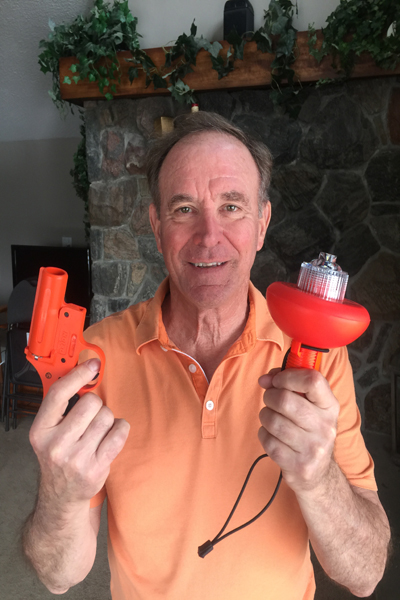 Ted Rankine holds a flare gun and also an electronic distress strobe – he has both in his safety kit but he believes flares get attention fastest
Ted Rankine holds a flare gun and also an electronic distress strobe – he has both in his safety kit but he believes flares get attention fastest
He shared an experience he had while shooting an episode of Powerboat Television at Roche’s Point on Lake Simcoe. With the assistance of York Regional Police and the Canadian Coast Guard, Ted and his team filed the proper papers for ‘Notice to Mariners’ that there would be a demonstration of flare use at dusk on Roche’s Point on a particular evening and that it was not a real emergency. In spite of that, within 10 to 15 minutes,nine different boats had responded, ready to give assistance. Boaters recognized the flare signal and came as fast as they could.
The experience convinced Ted of the flare’s power to get attention.
“I want a flare,” he said. “I think it’s like a shout compared to a conversation.”
John Gullick told us that while the Canadian Power and Sail Squadrons are not taking a side on this, he has deployed flares in controlled demonstrations. John also did a Canadian Marine Advisory Council (CMAC) presentation with marine safety equipment manufacturer, Pains Wessex, demonstrating their new electronic strobe distress signal. The demonstration includedone with fresh batteries and one that had already run for 60 hours, andit was difficult to see the difference between thetwo.
United States Search and Rescue technicians have also seen it in action and reported that it was very visible, especially at night. It would help people to hone in on a person at sea and get really on target with the continuous strobe flash.
John noted that radio distress calls will not be as “close to target” even during the day. The strobe is visible in daylight as well, although obviously, it shows up best in the dark.
John notes that after the real energy blast of a flare has burned, there’s nothing left to draw attention versus the electronic strobe that will keep flashing for days. The electronic versions also avoid accidental discharge in a moment of panic that could make an emergency even worse.
John anticipates that electronic strobe distress flares will eventually be approved in Canada,but probably as a supplement to pyrotechnic distress flares.
Ted believes the strobe types are a great supplement, but he points out that the critical issue in a real emergency is whento call for help. He talked about the “accidental accident.” In other words, when something simple like a dead battery or running out of fuel later turns into a stormy night on the lake. Here are some key tips:
• Always carry the required safety equipment in every size of boat
• Wear your lifejacket
• Leave a float plan – let people know when you have not returned as expected
• As soon as a problem hits, call for help. Get help in daylight
• Call home, call your marina, but call…don’t wait for someone to happen past
• When it starts to get dark, make the call to Search and Rescue – don’t delay
• Dial 911 on your cell phone to get the police
• Or, dial*16 on your cell phone to be connected directly to the Canadian Coast Guard
• If you don’t see help nearby, and you can’t fix the problem, and you don’t have a cell phone or a VHF radio, deploy a flare
• Have the required flares onboard (and why not get an electronic strobe?)
• Smoke flares are useful in daylight
• Use a multi-star flare or a parachute flare for prolonged exposure and have more than one flare
• The first one captures somebody’s attention, but it’s the second one that they notice and are able to focus on
Finally, if you have expired flares, keep them onboard as spares. Having more than just three flares can be really valuable. After you buy fresh flares (and an electronic strobe) visit the Canadian Power and Sail Squadrons’ website to learn about the flare disposal program so you can properly recycle your old flares.
Safe boating!
http://www.cps-ecp.ca
http://www.orionsignals.com
http://www.painswessex.com
http://www.weems-plath.com


